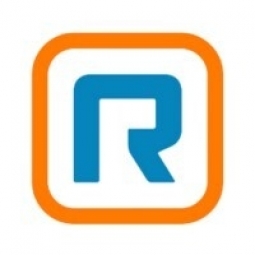Technology Category
- Robots - Wheeled Robots
Applicable Industries
- Buildings
- Telecommunications
Use Cases
- Personnel Tracking & Monitoring
Services
- System Integration
About The Customer
Teles Properties is a unique high-end boutique for luxury real estate, founded in 2007. The company was named one of Inc. 5000’s “Fastest Growing Companies” in 2013, demonstrating innovative support for its agents and professional service for its customers. With over 40 staff employees and more than 300 agents, Teles Properties has eleven offices located on the California coast from Orange County to Monterey. The company is known for its rapid growth and constant expansion.
The Challenge
Teles Properties, a luxury real estate boutique, was facing significant challenges with its traditional PBX phone system. The company, which was experiencing rapid growth and expansion, had multiple offices each with different phone systems. This made management of the systems tedious and difficult. Some of the systems were so outdated that the company had to resort to eBay to find extra headsets for new employees. Adding a new phone number or user into the system was a major headache, often requiring the costly services of a technician. The hardware was unreliable, often dropping calls. The company lacked a central number to direct people to, making it difficult for customers and staff to connect.
The Solution
Teles Properties found its solution in RingCentral, a cloud business phone solution. With RingCentral, the company could have a new office up and running in a single day. The system unified all the offices, providing a central number that directed callers to an automated list of services. Calls could be transferred between offices, connecting the staff. The real estate industry is highly mobile, and RingCentral provided the flexibility needed. Calls could be forwarded to any device, and the mobile app could be used even internationally. Agents could set office hours and respond with personal preference on flexibility. RingCentral’s Business SMS allowed agents to be more accessible, as customers could text single questions. The switch to RingCentral consolidated five services into one business phone solution, all of which could be managed remotely on a mobile phone.
Operational Impact
Quantitative Benefit

Case Study missing?
Start adding your own!
Register with your work email and create a new case study profile for your business.
Related Case Studies.

Case Study
Energy Saving & Power Monitoring System
Recently a university in Taiwan was experiencing dramatic power usage increases due to its growing number of campus buildings and students. Aiming to analyze their power consumption and increase their power efficiency across 52 buildings, the university wanted to build a power management system utilizing web-based hardware and software. With these goals in mind, they contacted Advantech to help them develop their system and provide them with the means to save energy in the years to come.

Case Study
Intelligent Building Automation System and Energy Saving Solution
One of the most difficult problems facing the world is conserving energy in buildings. However, it is not easy to have a cost-effective solution to reduce energy usage in a building. One solution for saving energy is to implement an intelligent building automation system (BAS) which can be controlled according to its schedule. In Indonesia a large university with a five floor building and 22 classrooms wanted to save the amount of energy being used.

Case Study
Powering Smart Home Automation solutions with IoT for Energy conservation
Many industry leaders that offer Smart Energy Management products & solutions face challenges including:How to build a scalable platform that can automatically scale-up to on-board ‘n’ number of Smart home devicesData security, solution availability, and reliability are the other critical factors to deal withHow to create a robust common IoT platform that handles any kind of smart devicesHow to enable data management capabilities that would help in intelligent decision-making

Case Study
Protecting a Stadium from Hazardous Materials Using IoT2cell's Mobility Platform
There was a need for higher security at the AT&T Stadium during the NFL draft. There was a need to ensure that nuclear radiation material was not smuggled inside the stadium. Hazmat materials could often be missed in a standard checkpoint when gaining entry into a stadium.









